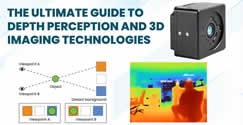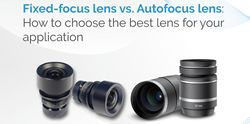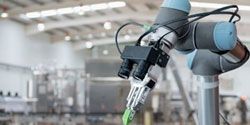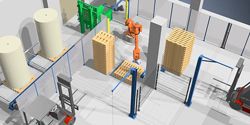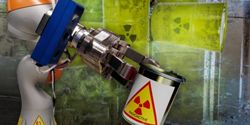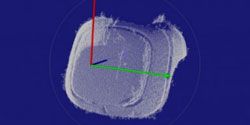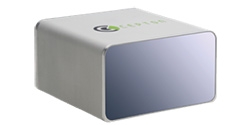The Ultimate Guide to Depth Perception and 3D Imaging Technologies
Depth perception helps mimic natural spatial awareness by determining how far or close objects are, which makes it invaluable for 3D imaging systems. Get expert insights on how depth perception works, the cues involved, as well as the various types of depth sensing cameras.
Fixed-focus lens vs. autofocus lens: How to choose the best lens for your application
In this blog, you'll learn about these two lens types with key insights into their attributes and best-use scenarios in the world of embedded vision.
3D Image Processing Solution With 2D Cameras, AI and Robotics Optimizes the Manufacturing Landscape
The easy-to-integrate system consists of a module for robot arms, a computing unit with pre-installed intelligent software and a camera module, each equipped in series with two uEye+ XCP cameras from IDS.
3D Time-of-Flight Camera Aids Robotic Palletizers
Regardless of the palletizing method, the goal of any supply chain operation is to ship out the most product possible. This can only be done by making the best use of the space on each individual pallet, even if it means just one more package per pallet.
Robot-assisted System with Ensenso 3D Camera For Safe Handling of Nuclear Waste
Anyone who has ever tried out a fairground grab machine can confirm it: Manual control of grab arms is anything but trivial. As harmless as it is to fail when trying to grab a stuffed bunny, failed attempts can be as dramatic when handling radioactive waste.
Exact Trimming of Foam Parts With Ensenso 3D Camera
The conditions placed on original equipment manufacturers and suppliers are immense in order to ensure high quality and continuous improvement, waste reduction and error minimization.
LiDAR Solution for Mass Production and Adoption
LiDAR offers a number of advantages over other perception solutions, enabling smart machines to "see" far distances and generate a 3D representation of their surrounding environment to detect obstacles and make intelligent navigation decisions.
Records 1 to 7 of 7
Featured Product
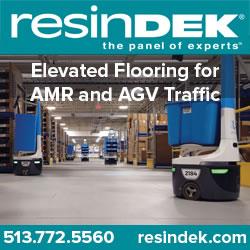
ResinDek® TRIGARD® ESD ULTRA FOR HIGH-TRAFFIC ROBOTIC APPLICATIONS
To maximize the productivity of an autonomous mobile robot (AMR) or automatic guided vehicle (AGV) deployment, it's critical to create the optimal environment that allows the vehicles to perform at their peak. For that reason, Cornerstone Specialty Wood Products, LLC® (www.resindek.com) created the TriGard® ESD Ultra finish for its ResinDek® engineered flooring panels. The TriGard ESD Ultra finish is ideal for high-traffic robotic applications characterized by highly repetitive movement patterns and defined travel paths.

